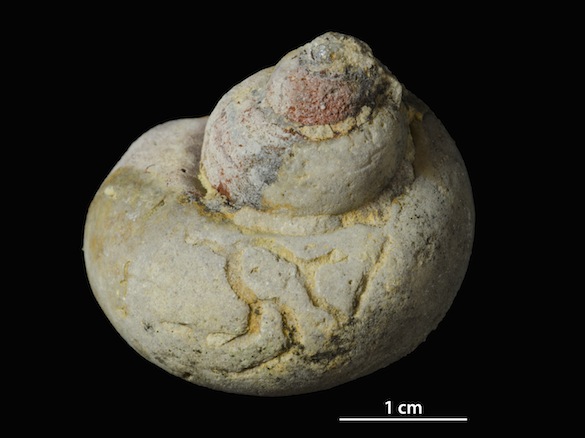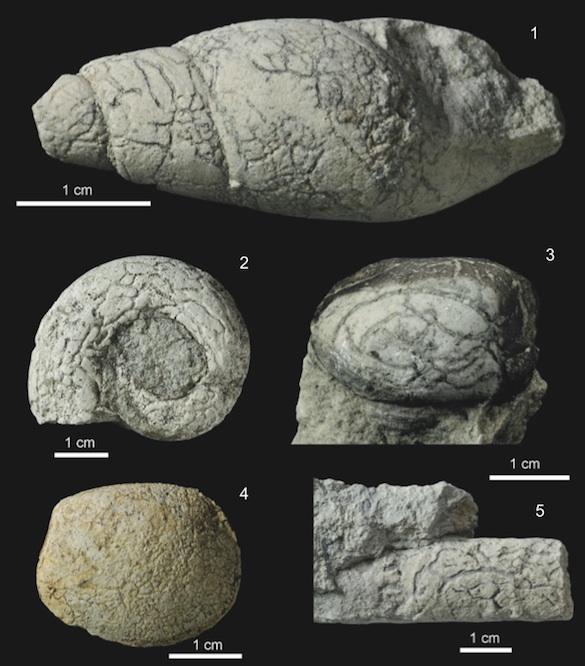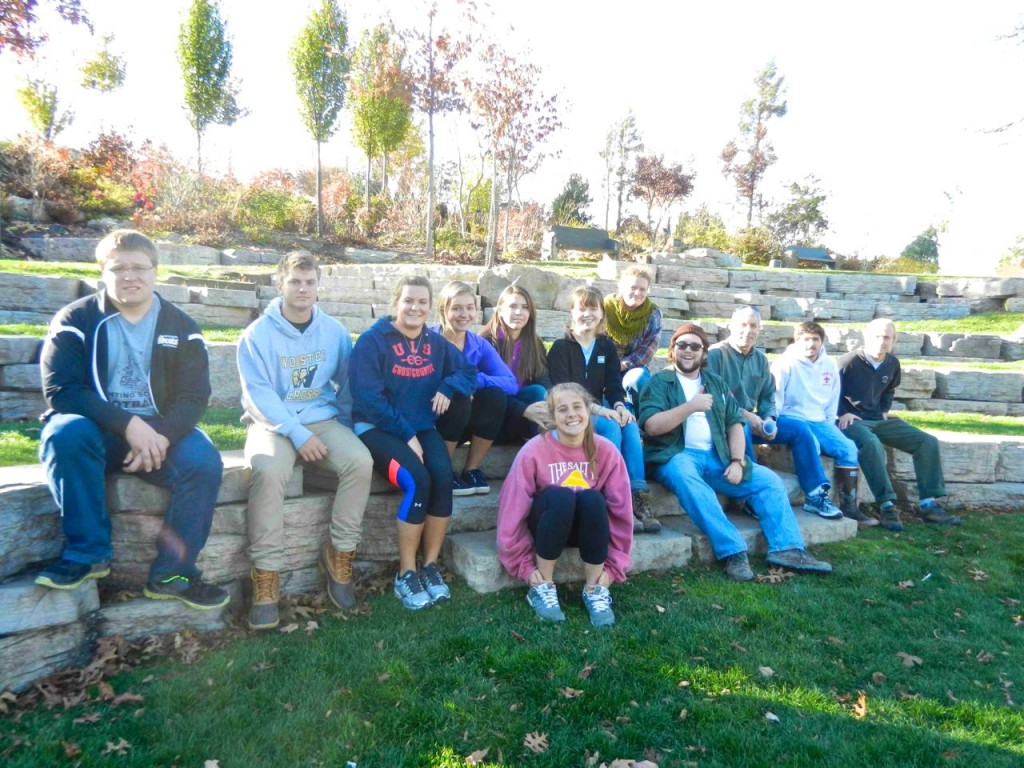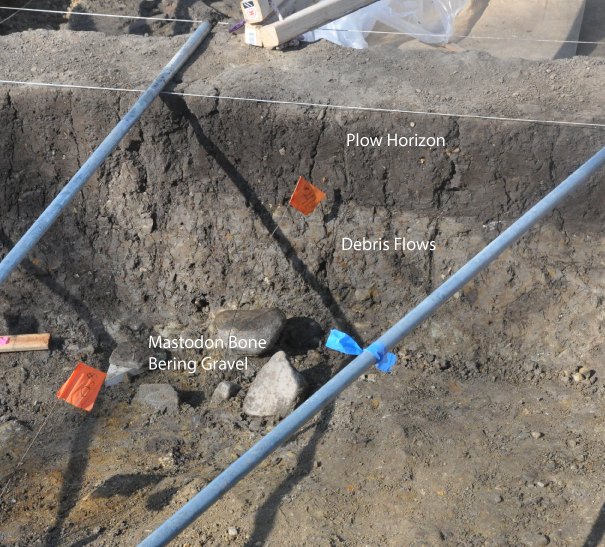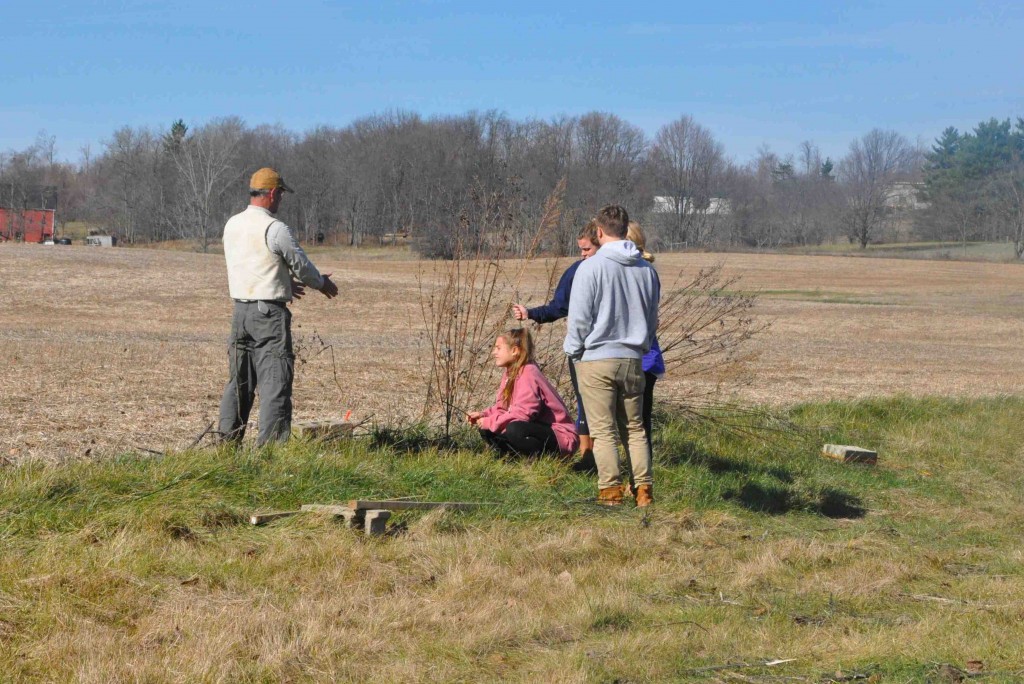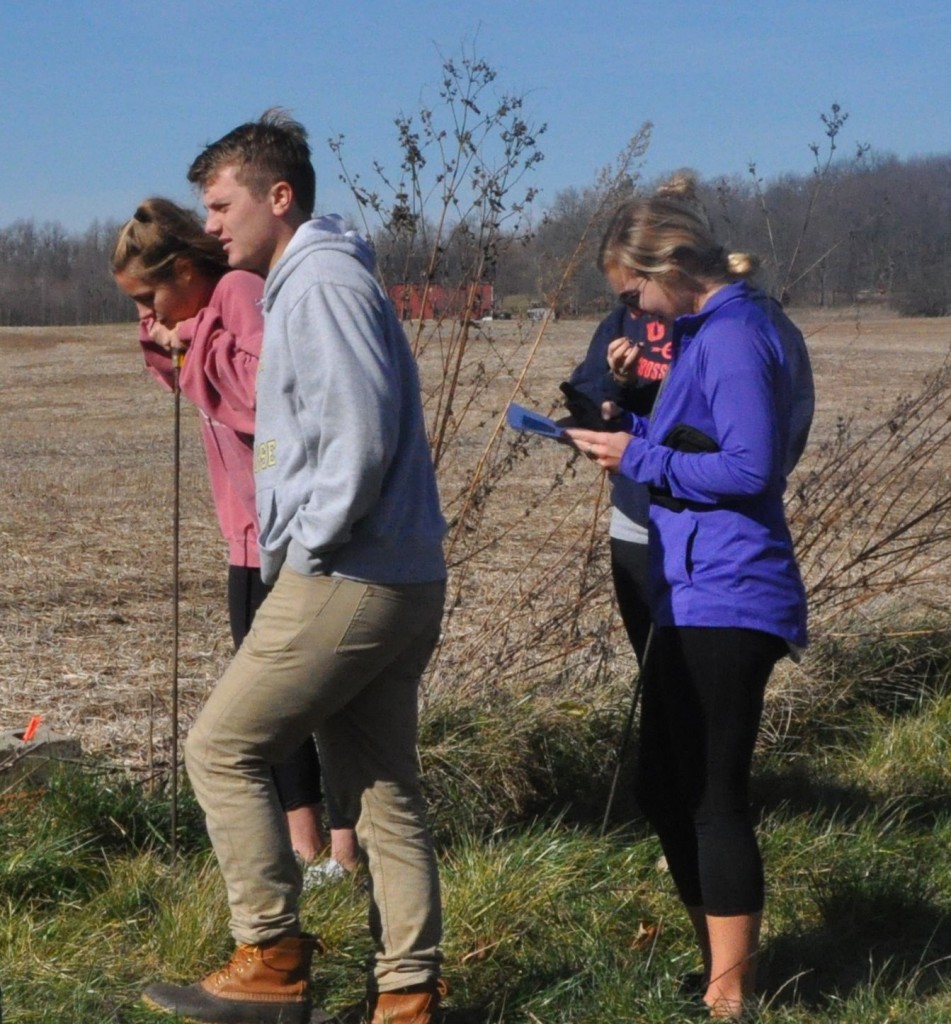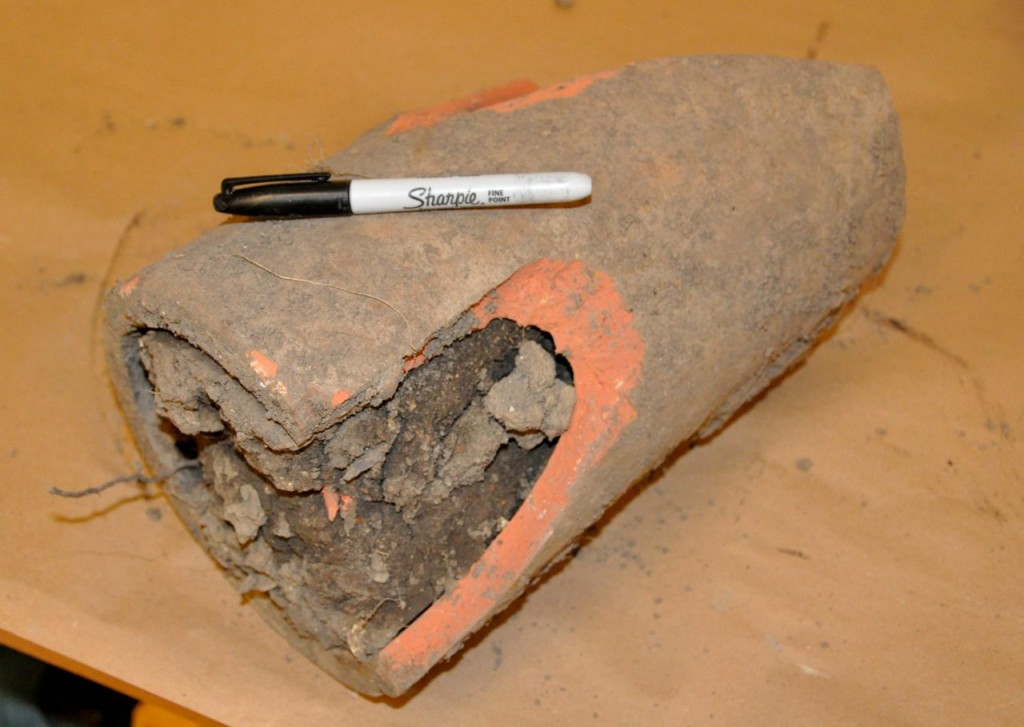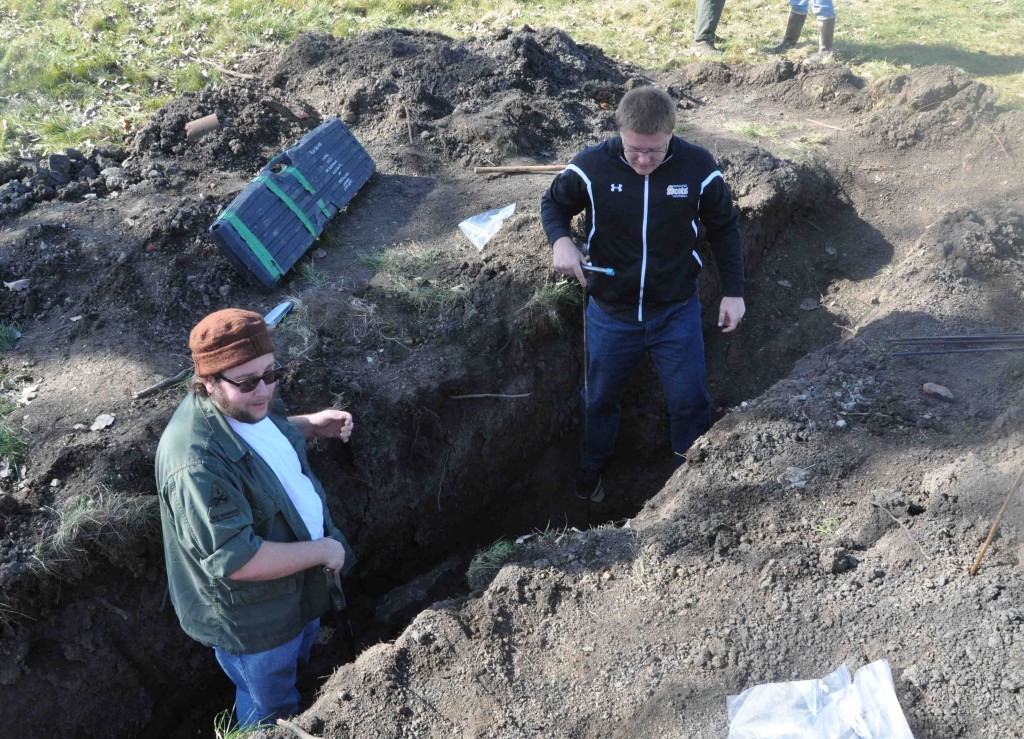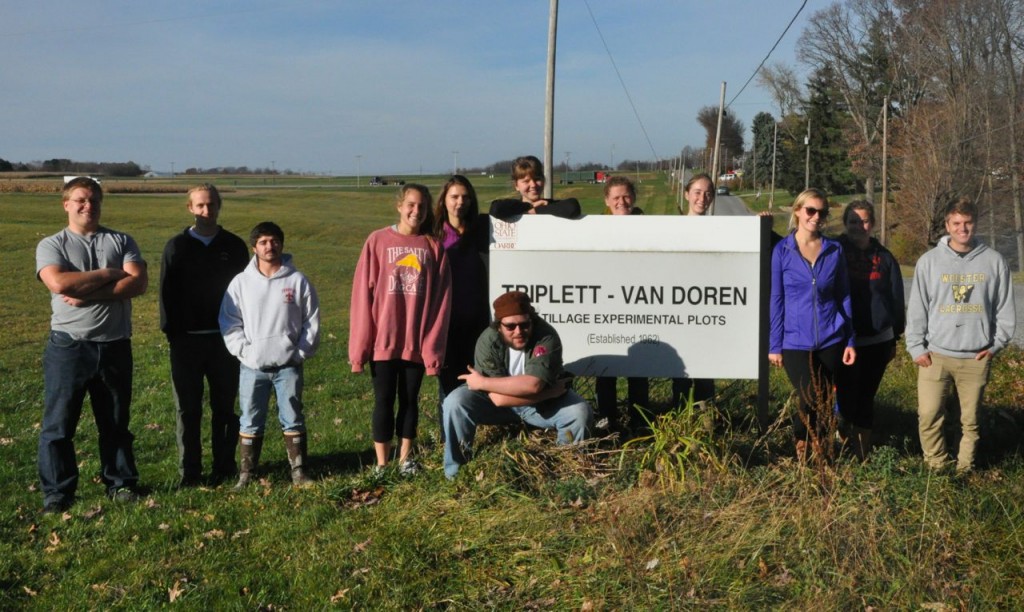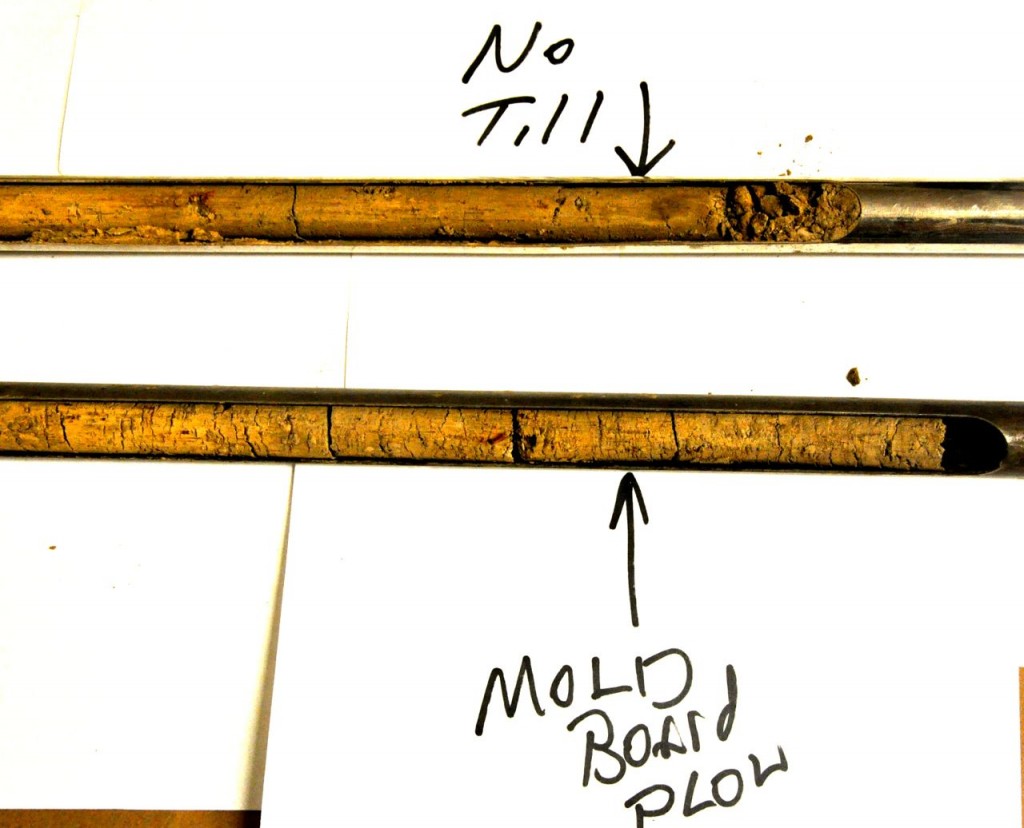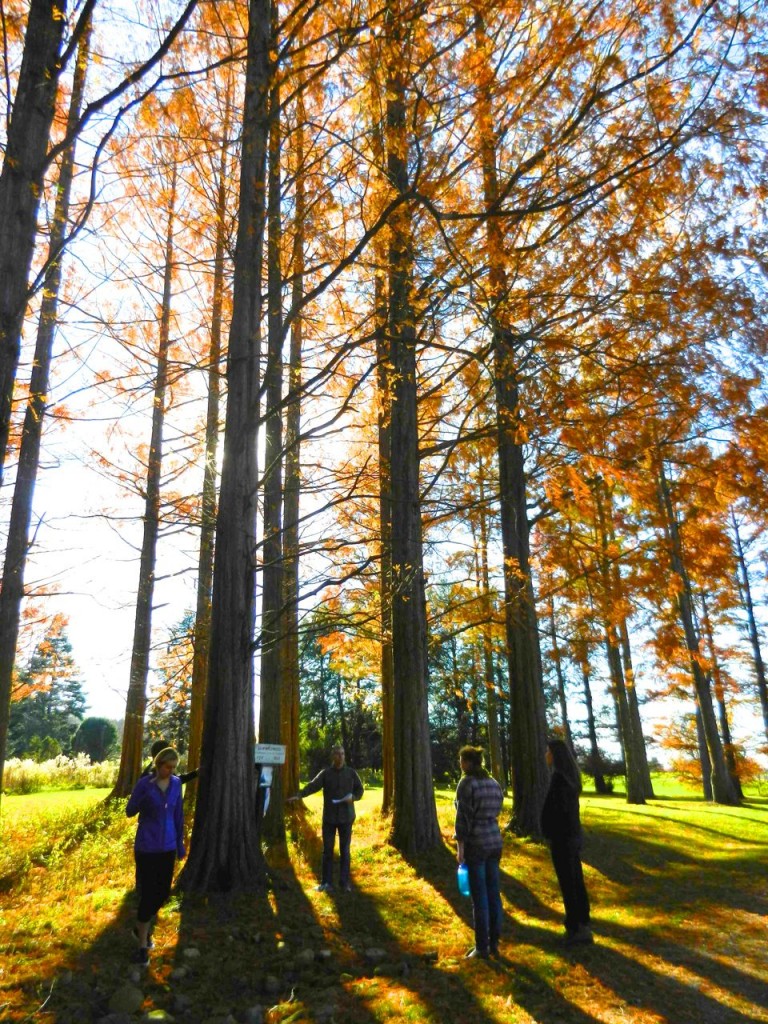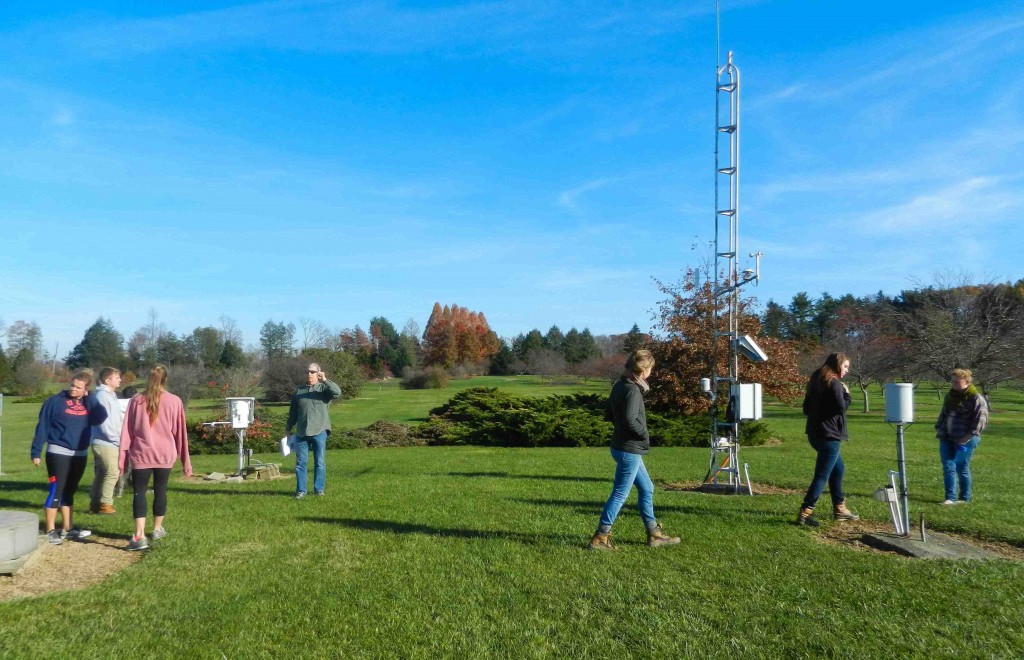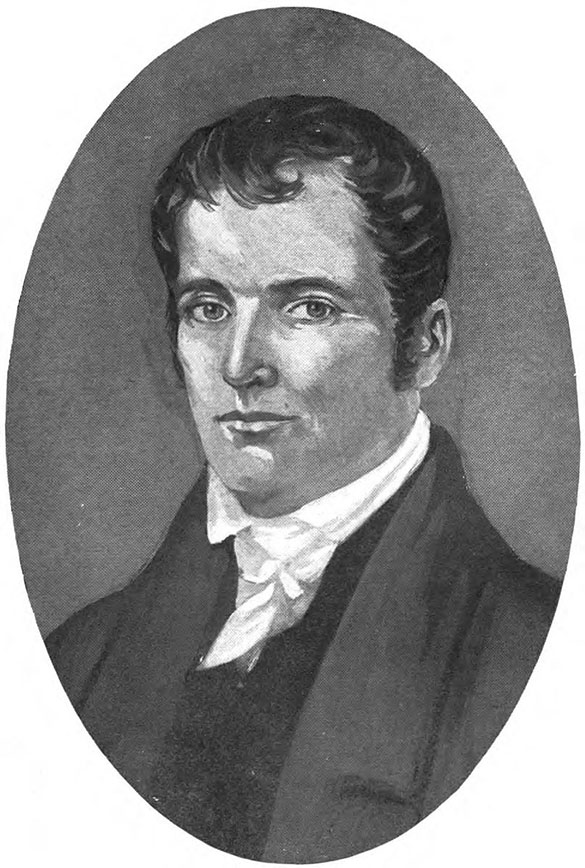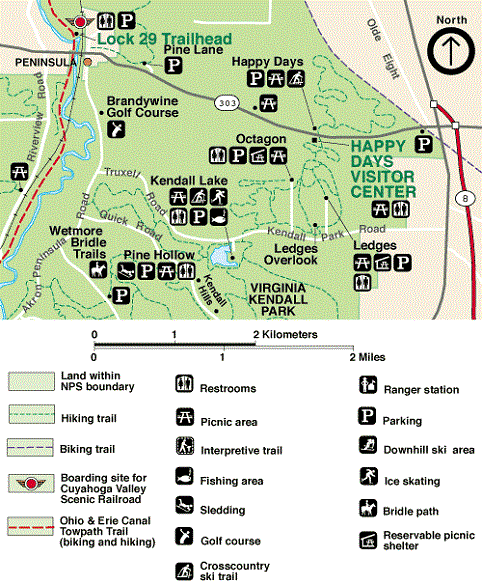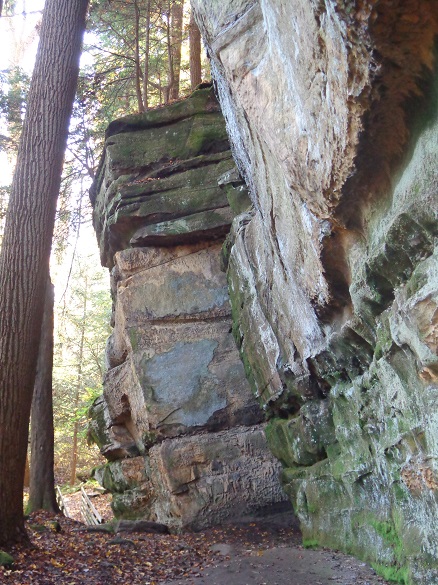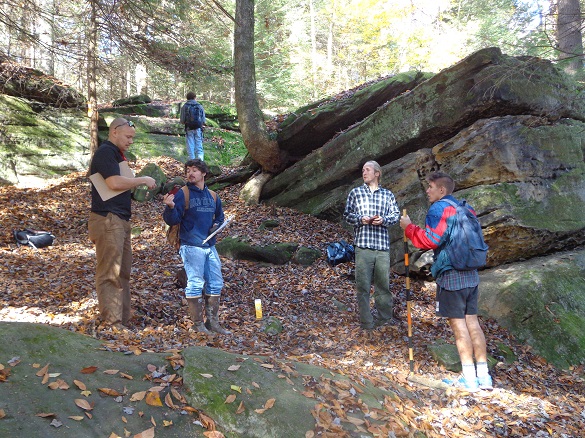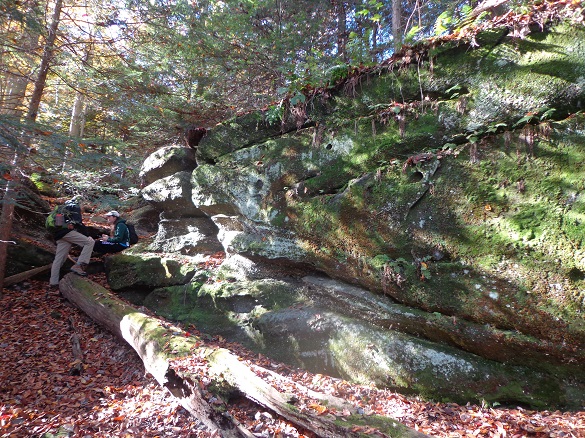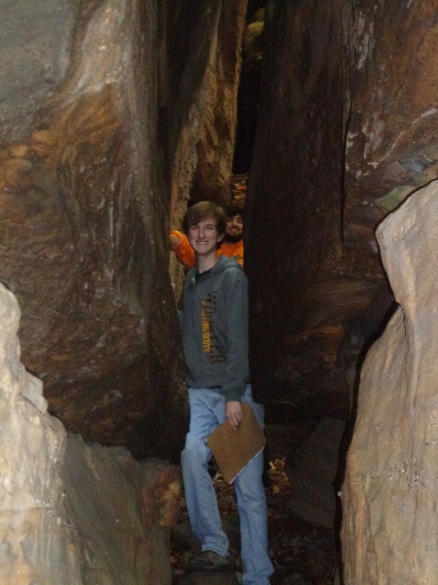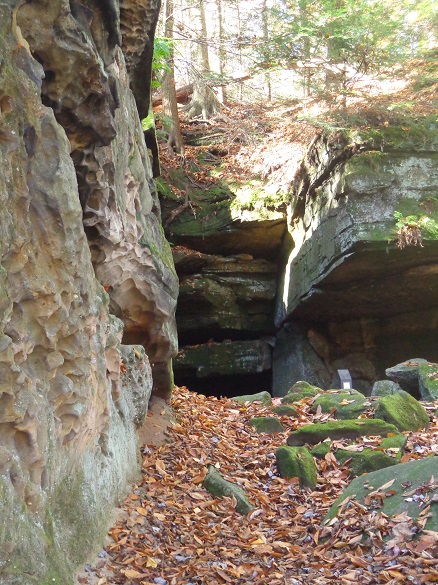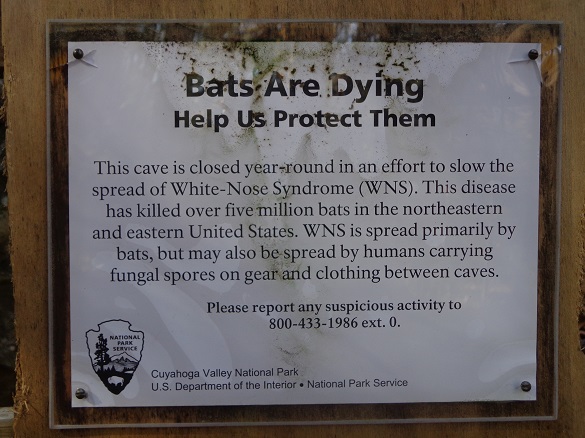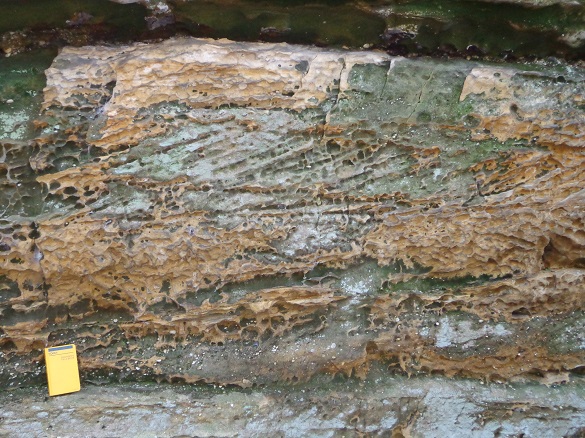 Every year we highlight at least one of the fossils found and studied by Wooster’s Invertebrate Paleontology class as part of their field and laboratory exercises. This year it is this nice slab of trace fossils collected by Curtis Davies (’15) on our August 31 field trip to the emergency spillway in Caesar Creek State Park. I didn’t even notice it at the time Curtis picked it up. I only saw its full glory when he photographed the rock as part of a paleontological essay.
Every year we highlight at least one of the fossils found and studied by Wooster’s Invertebrate Paleontology class as part of their field and laboratory exercises. This year it is this nice slab of trace fossils collected by Curtis Davies (’15) on our August 31 field trip to the emergency spillway in Caesar Creek State Park. I didn’t even notice it at the time Curtis picked it up. I only saw its full glory when he photographed the rock as part of a paleontological essay.
 Curtis Davies is the smiling, bearded guy in the back (with Galen Schwartzberg) at the Caesar Creek outcrop. The rain had finally stopped and everyone was happy.
Curtis Davies is the smiling, bearded guy in the back (with Galen Schwartzberg) at the Caesar Creek outcrop. The rain had finally stopped and everyone was happy.
The traces are exposed here on the bottom of a bed of argillaceous limestone. They are preserved in what trace fossil workers (ichnologists) call convex hyporelief, which means simply that they stick out on the base (or sole) of the rock slab. These were tunnels originally excavated in soft mud by worm-like animals. The tunnels were filled with sediment that cemented up more resistant than the surrounding matrix, and thus were weathered in this relief.
 Most of the trace fossils here are the simple unlined burrow called Planolites, one of the most common traces in the Ordovician of the Cincinnati area. The trace labelled with the red “T” above, though, is rare here. Note that it is formed by a series of pulse-like movements that produced segments in the sediment infill. My estimate is that this trace can be classified as Taenidium serpentinum Heer, 1877. It is not common in the Ordovician.
Most of the trace fossils here are the simple unlined burrow called Planolites, one of the most common traces in the Ordovician of the Cincinnati area. The trace labelled with the red “T” above, though, is rare here. Note that it is formed by a series of pulse-like movements that produced segments in the sediment infill. My estimate is that this trace can be classified as Taenidium serpentinum Heer, 1877. It is not common in the Ordovician.
 Oswald Heer (1809-1883), the scientist who named Taenidium serpentinum, was a Swiss geologist and botanist. As was the case for many educated Europeans, he started as a clergyman, even signing up for holy orders. The natural world captivated him, though, and starting with insects he worked his way up to become a naturalist and professor of botany at the University of Zürich. He was one of the key figures in the establishment of paleobotany (the study of fossil plants).
Oswald Heer (1809-1883), the scientist who named Taenidium serpentinum, was a Swiss geologist and botanist. As was the case for many educated Europeans, he started as a clergyman, even signing up for holy orders. The natural world captivated him, though, and starting with insects he worked his way up to become a naturalist and professor of botany at the University of Zürich. He was one of the key figures in the establishment of paleobotany (the study of fossil plants).
 Here is Heer’s figure of Taenidium serpentinum from Plate XLV in his 1877 book, Flora fossilis Helvetiae (Fossils Plants of Switzerland). You see the irony already. Heer described this trace fossil as a plant, inadvertently becoming one of the early figures in ichnology, the study of trace fossils.
Here is Heer’s figure of Taenidium serpentinum from Plate XLV in his 1877 book, Flora fossilis Helvetiae (Fossils Plants of Switzerland). You see the irony already. Heer described this trace fossil as a plant, inadvertently becoming one of the early figures in ichnology, the study of trace fossils.
Oswald Heer published many books and papers, becoming well known for his geological and paleontological explorations and descriptions. He was awarded the prestigious Wollaston Medal from the Geological Society of London in 1874. He was an earlier advocate of using fossils to sort on problems of paleogeography. He knew, for example, that Miocene fossils in Europe and North America were very similar, so he suggested in those days before Plate Tectonic Theory that the two continents were connected by a “land bridge“. This was called the “Atlantis Hypothesis”, and you can imagine the confusion that name caused among various cranks and pseudoscientists looking for Plato’s mythical continent. Heer died in Switzerland in 1883.
References:
D’Alessandro, A. and Bromley, R.G. 1987. Meniscate trace fossils and the Muensteria-Taenidium problem. Palaeontology 30: 743-763.
Heer, O. 1877. Flora fossilis Helvetiae: Die vorweltliche flora der Schweiz. Zürich, J. Wurster & Company. 182 p.
Keighley, D.G. and Pickerill, R.K. 1994. The ichnogenus Beaconites and its distinction from Ancorichnus and Taenidium. Palaeontology 37: 305-338.
Keighley, D.G. and Pickerill, R.K. 1995. Commentary: The ichnotaxa Palaeophycus and Planolites: Historical perspectives and recommendations. Ichnos 3: 301-309.






















